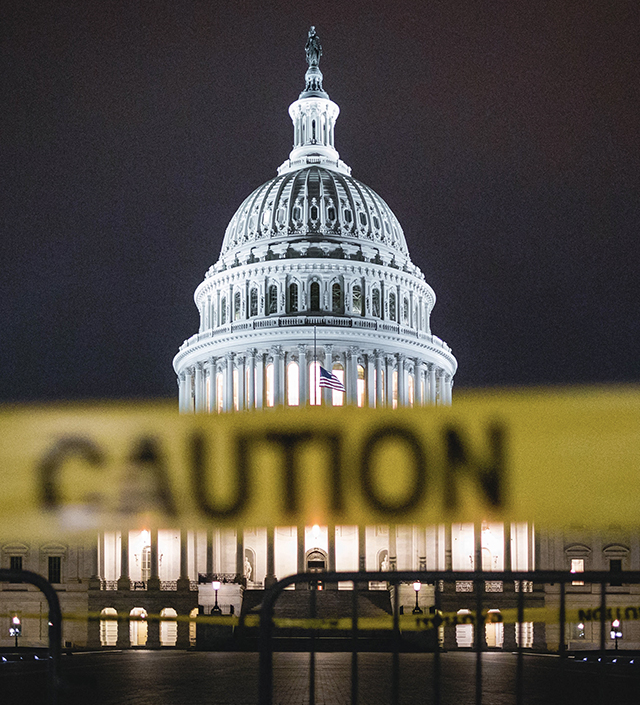Four retirement experts testified on June 23 before the U.S. House of Representatives’ Committee on Education and Labor that the U.S. needs better policies to give all Americans access to retirement plans. Increased availability of plans, higher plan participation rates and greater portability of plans are necessary, they said, although they expressed varying views on the state of the U.S.’s retirement system.
The testimony occurred during an online hearing titled “Examining Pathways to Build a Stronger, More Inclusive Retirement System.”
During his opening statement, Congressman Mark DeSaulnier (D-Calif.), chair of the Subcommittee on Health, Employment, Labor and Pensions, said roughly 55 million people nationwide lack access to retirement benefits through their employers. He also noted that the human lifespan has doubled over the past century, citing a recent New York Times Magazine article.
“We must make sure our retirement system is equipped to support living longer, and that it provides measures of protection,” said DeSaulnier. He also mentioned the recent $86 billion federal bailout of multi-employer pensions — an initiative witnesses and members of Congress people praised and criticized during the hearing.
Testifying were Dr. Teresa Ghilarducci, a professor of economics and policy analysis at The New School for Social Research and director of the Schwartz Center for Economic Policy Analysis; Dr. Nari Rhee, director of the Retirement Security Program at the University of California at Berkeley; Dr. Andrew Biggs, a resident scholar at the American Enterprise Institute; and Mr. David Certner, legislative counsel and director of Legislative Policy for Government Affairs at AARP.
History and a New Proposal
“Before Social Security and defined benefit plans were established, workers were more likely to die than they were likely to retire,” said Ghirladucci, who kicked off the testimony. “They died in their boots and women’s work was mainly unpaid.” We’ve come a long way since the elderly poor were sent to poorhouses and insane asylums, she said, but she is concerned about “going back to the future.”
“Right now, all of us here at the hearing are at greater risk of our parents moving in with us in our spare bedroom, in our basements, in our renovated garage than our parents faced with our grandparents,” she said. “Another reverse of progress that I fear is the widening gap in between the classes.”
Ghirladucci noted that she and “an unlikely partner,” Kevin Hassett, a former chairman of the Council of Economic Advisors in the Trump Administration, have teamed up to develop a bipartisan proposal to equalize wealth and retirement. They’ve come together with the Economic Innovation Group, a policy and advocacy organization, to propose that everyone have access to a pension similar to the Thrift Savings Plan that’s offered to federal government employees.
Inequities Prevail
Rhee, whose testimony followed, noted inequalities in the current private retirement system related to gender, race and income. Only 46% of Black working households and 37% of Latino working households include a member who is participating in a pension or defined contribution plan, compared to 60% of White working households, she said.
Being married also makes a big difference, said Rhee, sharing data from her analysis of the Federal Reserve’s 2019 Survey of Consumer Finances. Among households age 25-64 with a defined contribution plan/IRA, the median balances in these accounts is $73,000 for married households, compared with just $32,000 for single female households and $40,000 for single male households, she noted.
For top quintile households age 55-64, the medium retirement account balance is $666,000 for those with a DC Plan/IRA, compared with $500,000 for all households. Among the next quartile of households age 55-64, the median retirement account balance is $130,000 for those with a DC plan/IRA, versus $63,000 for all households, she noted.
Rhee also pointed out the auto-IRA programs some states have introduced don’t cover the part-time workers who are excluded from ERISA-regulated plans. “And so I think there’s need for federal leadership on this issue,” she said.
A Different Perspective
Biggs, from the American Enterprise Institute, voiced a different perspective. “Never before has retiree income been so high, or poverty in old age so low. And so I predict the same will hold for the dire warnings you’ll hear today,” he said during his testimony. “But even more importantly, the federal government itself does not predict anything approaching your retirement crisis.”
In the mid-1970s, when traditional (defined benefit) participation was at its peak, only four in 10 private sector workers had a retirement plan, he said. Today, nearly 60% of workers (and more than 80% among married couples) participate in a workplace retirement plan, he added, attributing this data to the IRS.
“Remember, retirement saving isn’t about ending life with the most money,” said Biggs. “It’s about saving enough to maintain your standard of living, once you stop working, and a variety of data shows that the vast majority of Americans, rich and poor, from different walks of life, are able to do that.”
Still, “I support policies to give all Americans access to retirement plans,” he said. “We need to keep working to fill the gaps remaining in our system, so that every American that wants and needs to save for retirement has an easy and affordable way to do so.”
State Programs and Secure 2.0
Less than half of all workers have access to a retirement plan at work, said Certner of AARP, the last witness. Although Congress has taken many steps to make it easier to save for retirement — including automatic enrollment and other features — he emphasized that automatic features only help workers who have a retirement plan.
“Expanding coverage to the tens of millions of workers without coverage remains a high priority at the state level,” he said.
AARP is focused on passing “work and save programs” that provide employer-facilitated access to payroll deduction savings options for workers who lack a way to save for retirement at work, he said. An example he pointed to is CalSavers. [California employers who have more than 50 employees and don’t sponsor a workplace plan are required to register with CalSavers by June 30, 2021. CalSavers is also open to the self-employed and others who wish to save more.]
“Workers are 15 times more likely to save for retirement, simply through payroll deductions at work,” said Certner.
He said he supports the Securing a Strong Retirement Act of 2021 (“Secure 2.0”), bipartisan legislation recently approved by the Ways and Means Committee. The bill would provide coverage for the 27 million part-time workers who generally aren’t covered by retirement savings plans, he said.
“This is especially important for older workers and caregivers who will often shift to part-time work,” he said. Among other things, the bill would also require an annual paper retirement benefits statement for workers to review, he noted.
Jerilyn Klein is editorial director of Rethinking65.







